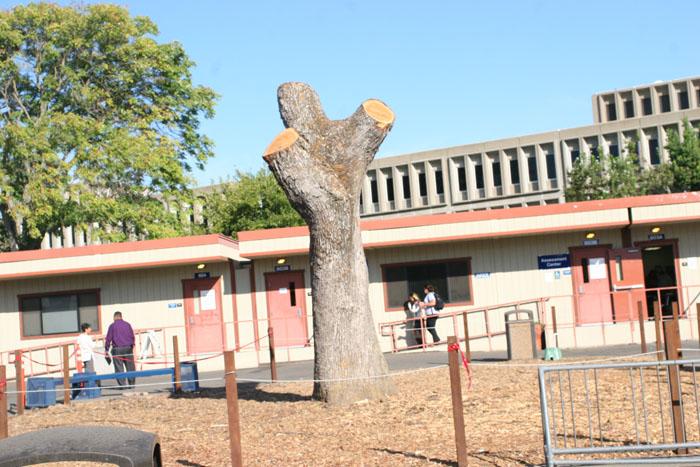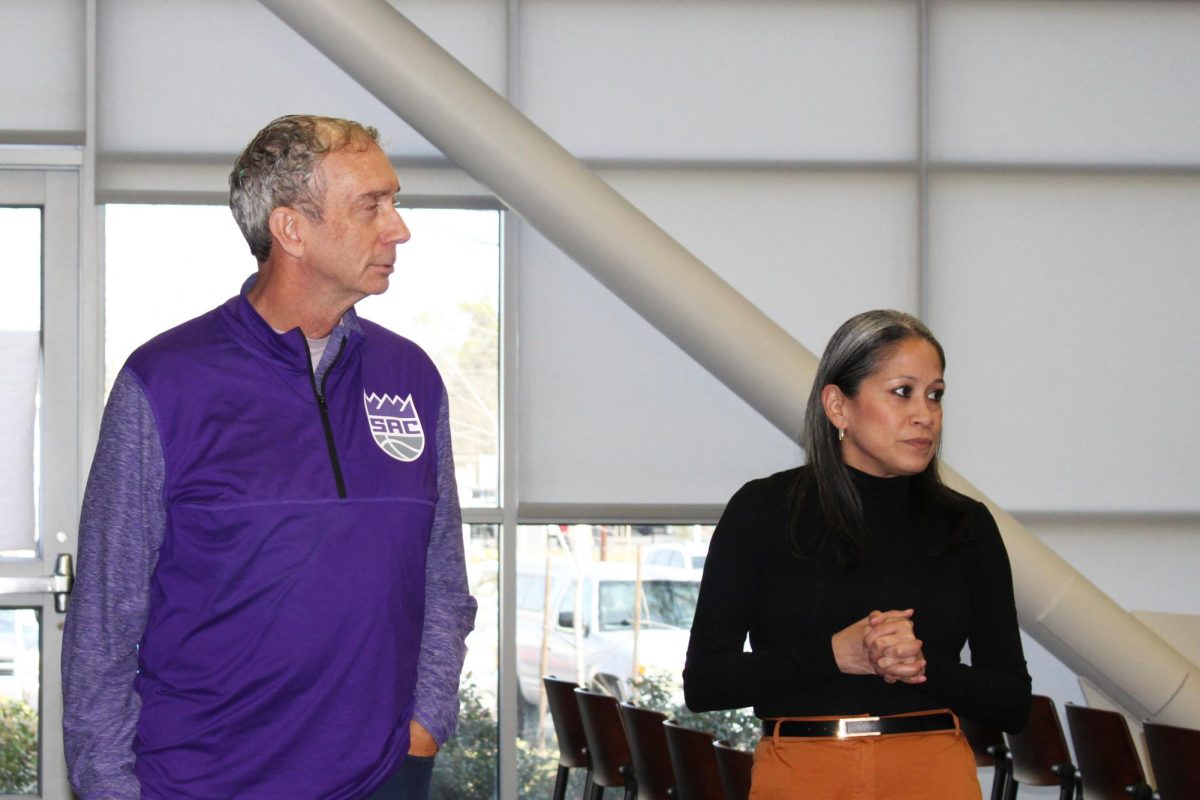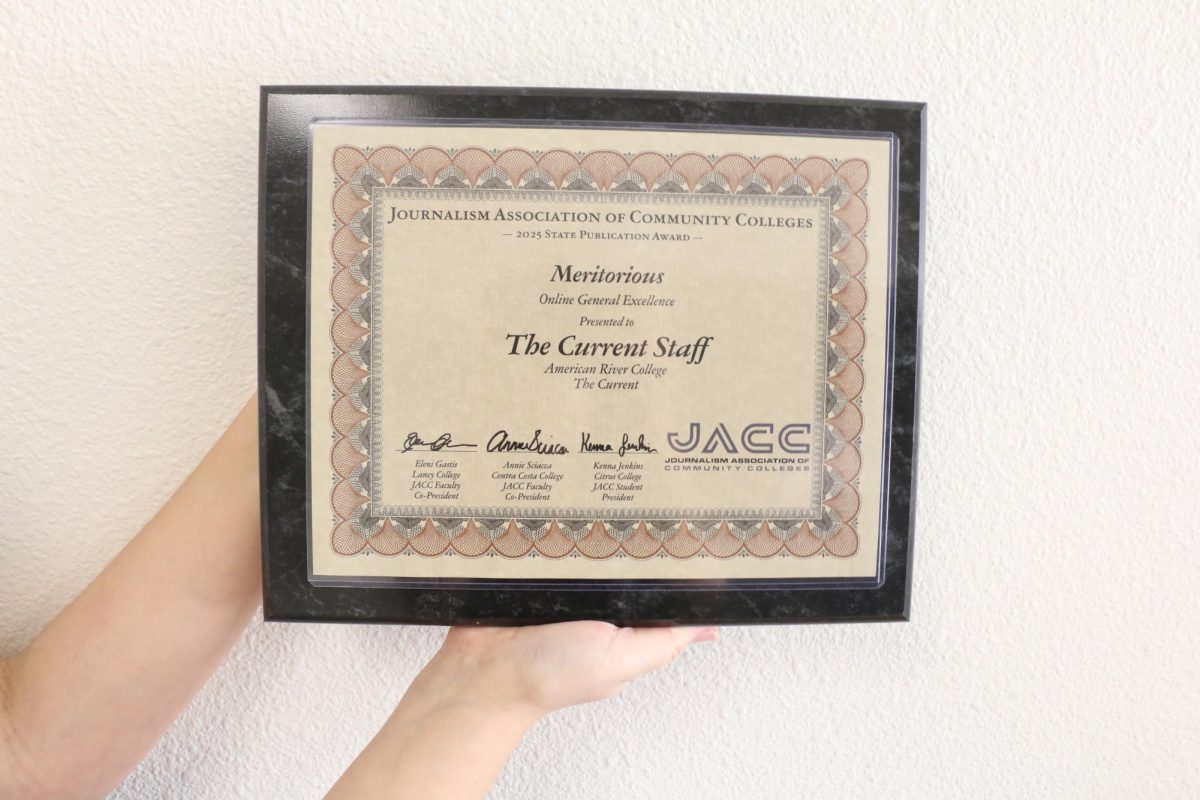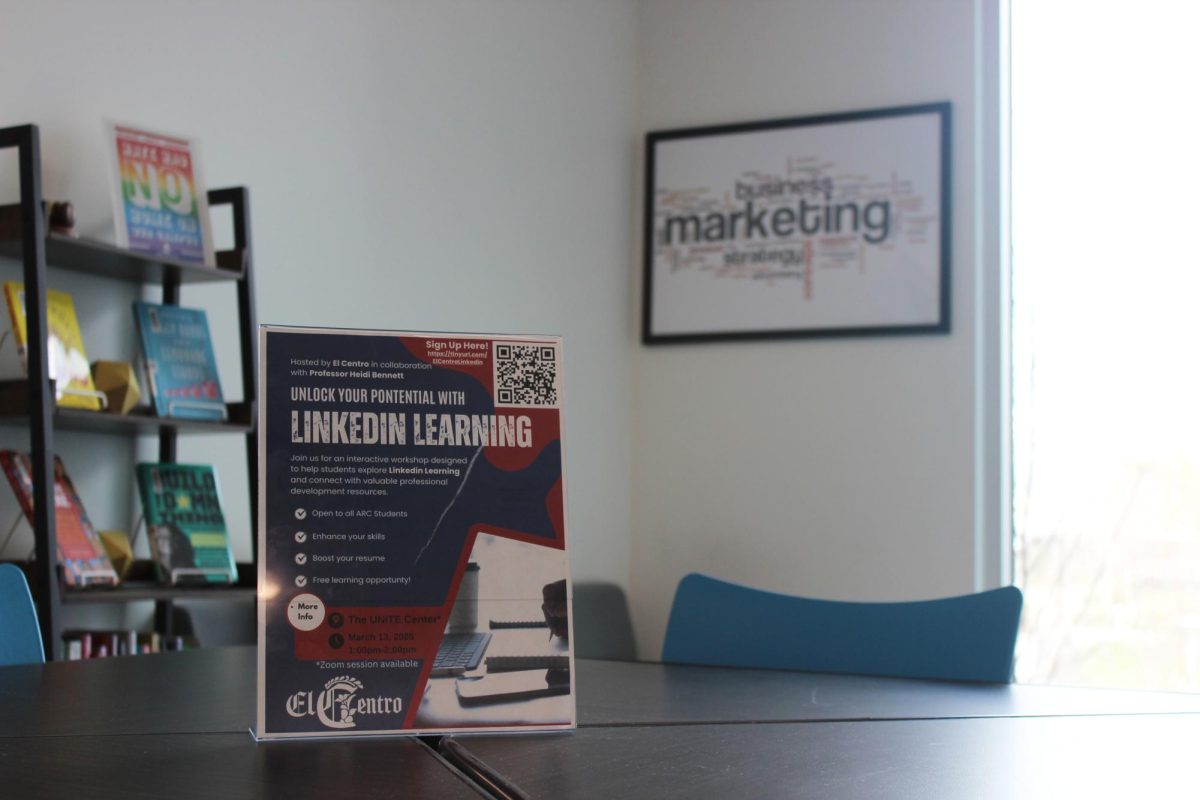American River College staff and other faculty are seeking to recycle the trunk of the heritage oak located near the portables.
The tree, which has been estimated by ARC staff to be between 400 and 600 years old, was considered a safety hazard after a portion of it broke off and landed on the ground.
While the incident occurred on a weekend and did not harm any people or buildings, it was still deemed enough of a hazard to warrant removing the branches of the tree.
The staff organizing the project believe the tree had contracted a disease that ultimately caused the branch to fall off.
In light of these trimmings, a group of staff and other faculty have come together to save the tree’s trimmings. “It’s an iconic heritage oak … According to some people, it was the inspiration for the school seal. To see the tree go is very sad, a lot of staff have responded to e-mail wanting to help or show their sadness over the loss of the tree,” said Cecilia Baldwin, a printing services operator who is organizing the reclamation project.
Baldwin says she found out that the tree’s trunk was going to be removed and requested a delay from Vice President of administrative services Ray Di Guilio and the Director of Administrative services Dan Mckechnie so that another solution could be reached in order to save the tree trunk.
After the delay had been been approved, Baldwin sent out a mass e-mail to staff and faculty to see if anyone else would help her with the project. Baldwin says she has received a strong response from faculty to her e-mail, with at least 50 faculty and staff members approaching her with ideas, according to Baldwin.
The group hopes to find a location to store the 6 rounds the tree stump will produce with potential storage areas being the Kinesiology, Athletics, and Horticulture departments.
They have also started a campaign to raise enough money to be able to mill the tree’s wood, which will cost about $2,500. The group was given $1,000 by Administrative services, but say they will need to raise the rest of the money themselves.
Despite the head start, the group stresses that they will need more donations in order to be able to have the wood milled. “It’s not up to one or two people. The more people we can get involved, the more successful our program will be,” said Don Reid, Supervisor of Printing Services and an organizer of the reclamation project.
The group of concerned faculty also wants to start a campus tree advisory committee to ensure other heritage oaks on campus are not lost. In order to set up this committee, they will need representatives from the student body, faculty, and facility management.
The group has received many different ideas for what to with the recycled wood, but have not yet reached a decision as of this writing. Ideas for what to do with the wood have ranged from a practical application to an artistic one. “(We want to) turn it into something useful for the campus. Benches, Podiums, (or) Wall plaques,” said Reid.
Research will also be done to find any programs or grants that can help further protect the remaining heritage oak trees, and an assessment of the current state of these trees will be done.
Students who want to donate to the staff’s project should visit their Facebook page Sustainability at ARC.













